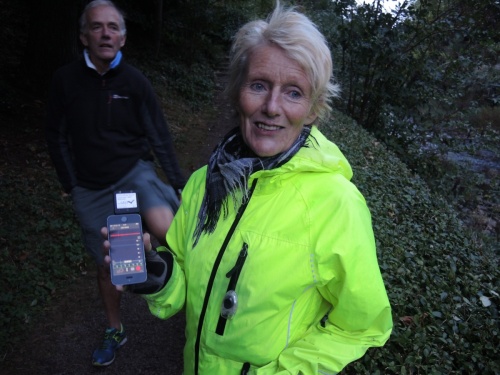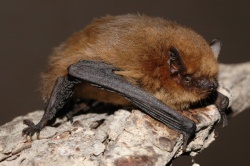Bat monitoring in Dean Valley
In early October we took part in a bat monitoring exercise in Dean Valley, led by Leonie Alexander, an expert from the Royal Botanic Gardens Edinburgh. Although late in the season, we localised a number of bats near Dean Bridge.

The Dean Valley with its river and associated woodland has been identified as a Local Biodiversity Site, a site of local importance for wildlife. Species of bat, which receive high levels of protection as European Protected Species, are present within the valley. Read more about this in our Biodiversity Scoping Document.

As part of the Edinburgh Living Landscape initiative, Leonie Alexander, the Urban Biodiversity Project Officer at the Royal Botanic Gardens Edinburgh, led a group to monitor bats in the Dean Gardens by the Water of Leith on Monday 3rd October.
We had a number of bat detectors which record the ultrasound which bats emit, ulstrasound that allows the bats to identify insect prey and to navigate in the dark. These calls are also used for socialising. The bat detector can be tuned to a specific frequency and it is then possible to identify bat species according to a combination of the sound and the frequency of the call as well as looking at the sonograms.

We identified two species and even saw them flying about. The most abundant was the soprano pipistrelle which echo-locates at around 55kHz.The other species was not confirmed but may have been natterers. Soprano pipistrelles are often associated with mixed habitat and water so this area of mature woodland, open grassland and the river valley constitutes good habitat for them.
The best location was underneath the Dean Bridge where they could roost in small gaps in the masonry or in surrounding trees and buildings. We were lucky to observe them at this time of year as they are beginning to get ready for hibernation and these will be the last few days of feeding themselves up before winter sets in.
The Natterer’s bat (Myotis nattereri) is two inches long and prefers open woodland and parks with water with dense vegetation. It eats insects some of which it collects flying about but others it gleans from the bark of trees and other vegetation. The Soprano pipistrelle bat (Pipistrellus pygmaeus) we detected is smaller at 1 ½ inches long, weights the same as a 20 pence piece and its presence indicates good quality habitat for bats. We picked it up on our monitors at 55 kHz frequency. Pipistrelles tend to live around human settlements and roost in buildings. For more on bats in the Dean Valley, see our Biodiveristy Scoping Document.
